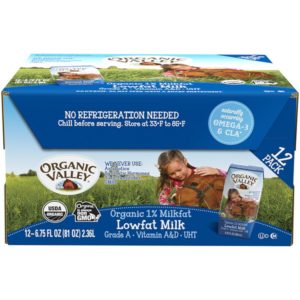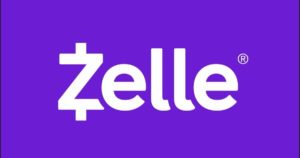What They Launched: Costco launched organic lowfat milk for kids
Costco has long offered individual organic chocolate milks in shelf-stable packaging under their Kirkland Signature label. And we’re onboard. We buy it. We keep it in the office to add to coffee. Thanks Costco!
But alas, chocolate milk isn’t perfect. Its Achilles heel? 27 g of sugar per serving. That’s a bunch.
And we assume that not everyone buying this milk is an adult adding it to their coffee. Many customers are likely buying it for those tiny people in their home known as kids. For snacks, for school lunches. It’s a higher protein, higher calcium alternative to a juice box.
The American Heart Association recommends no more than 25 g added sugars per day for kids, which means that one serving of Kirkland Signature chocolate milk is enough sugar to last a child the full day and into the following day. 25g is also the max daily added sugar intake recommendation for adult women. (It’s 36g for adult men–lucky guys)
So what is a parent to do? Plain milk has not been available in individual shelf-stable cartons. So Costco introduced non-chocolate Organic lowfat milk in individual shel-stable cartons. Great idea! So far.
How They Launched It: in smaller, branded cartons
Costco made some changes to the unit and pack size to the lowfat milk offering vs its chocolate counterpart. The retailer also launched it under a name brand vs private label.
- Brand
- Chocolate: Private Label (Kirkland)
- Plain: Branded (Organic Valley and Horizon)
- Unit Size:
- Chocolate: 8.25 oz
- Plain 6.75 oz
- Case Size
- Chocolate: 24 pack
- Plain: 12 pack
- Sugars per serving:
- Chocolate: 27g
- Plain: 10g
- Quality:
- Chocolate: yum
- Plain: also yum (may require higher quality milk as off-flavors that can be hidden in chocolate milk have nowhere to hide in unflavored milk)
What We Hate: 37% higher price per oz for low sugar vs high sugar
Smaller unit size means paying more for packaging and manufacturing per ounce. Smaller case pack means fewer volume efficiencies. Unflavored product means that higher quality milk may be required. And branded products generally mean higher margin for the manufacturer than private label. All of these higher costs to Costco net out to a higher price to the consumer–almost 40% higher price per ounce for plain milk vs chocolate milk.
So we end up with parents having to choose what they can best afford and what’s the healthiest choice for their kids.
How they could fix it: There are a few options here. We hope Costco keeps plain milk on the shelves as a healthier alternative the higher sugar offering. So Costco could relaunch a Kirkland label organic lowfat milk in a price-competitive format with the Kirkland organic chocolate milk. Or even better, they could take the opportunity to relaunch the chocolate milk as well to optimize the sugar and reduce the unit size so kids (and adults writing this article) can continue to enjoy some chocolate milk once in a while.
We still love you, Costco.

